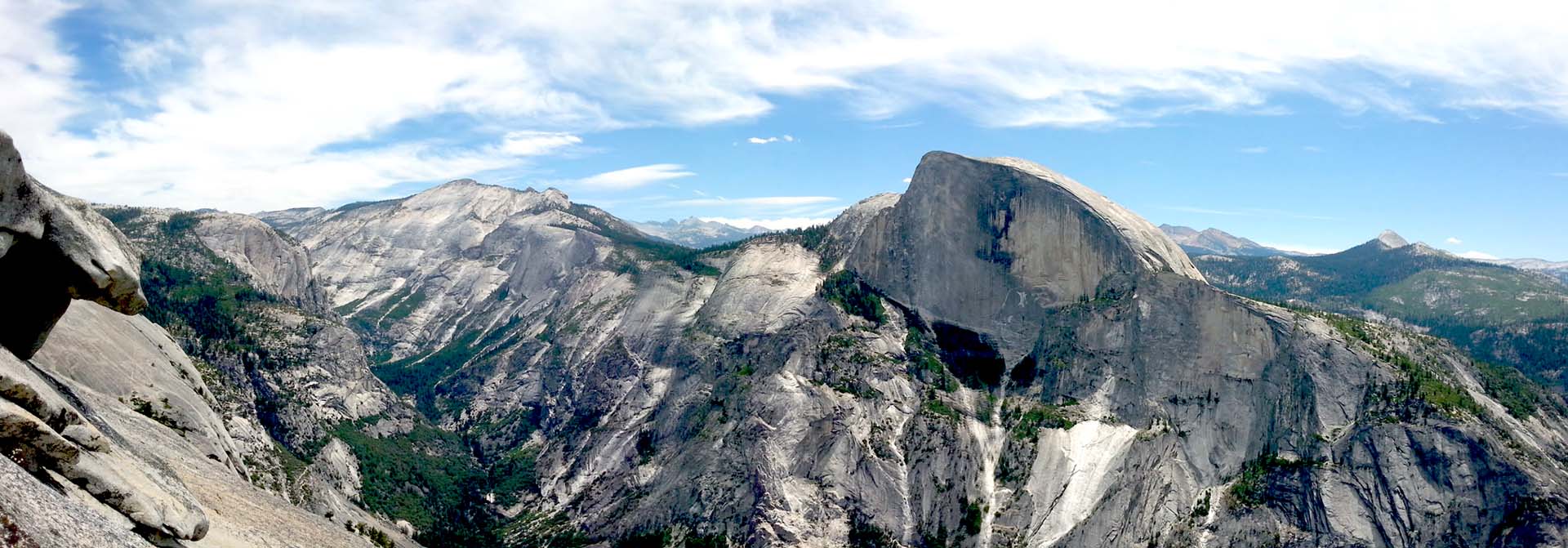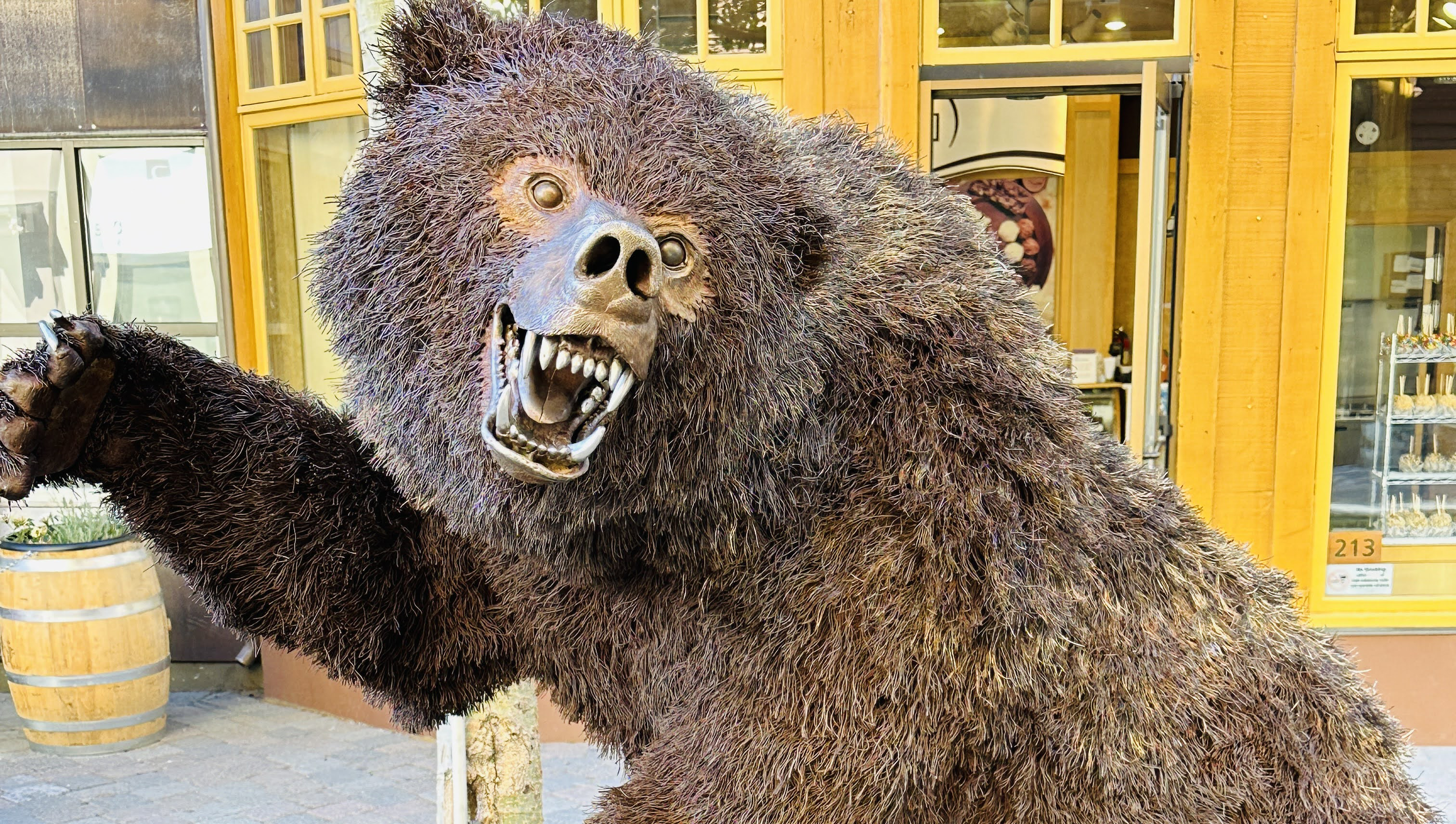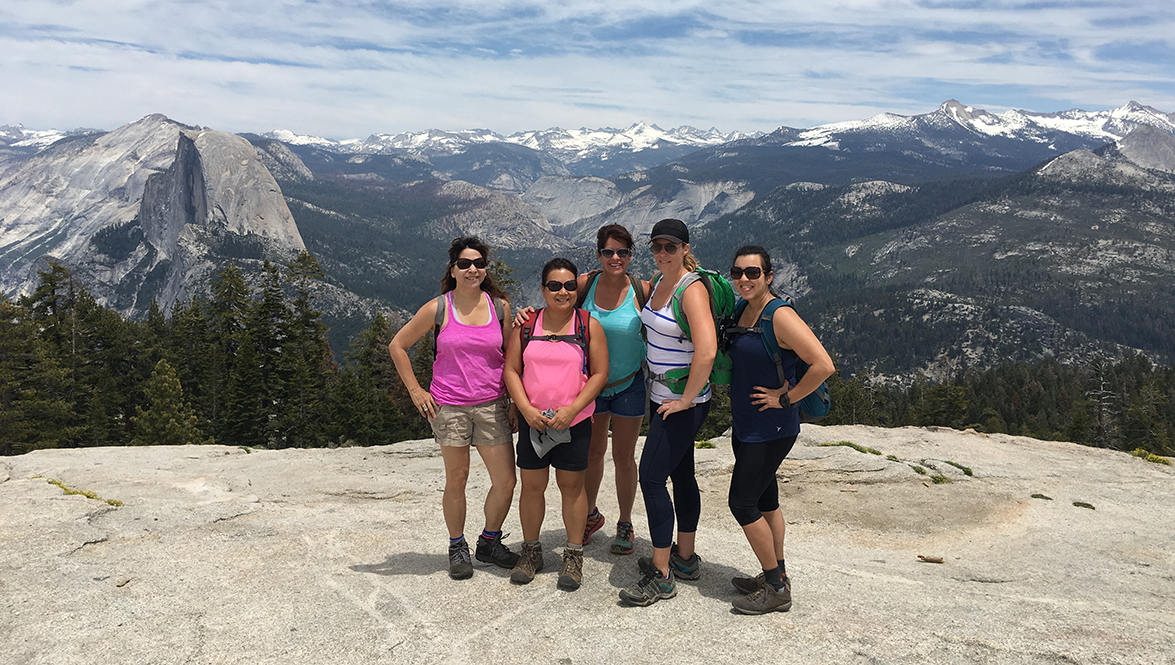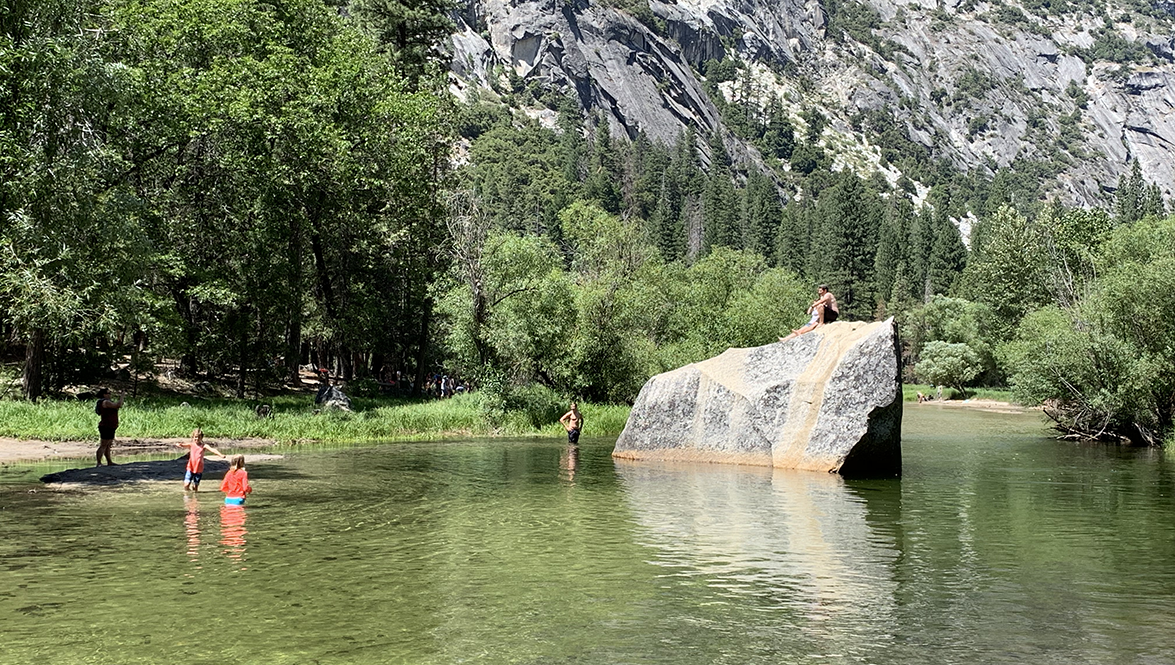Yosemite Planet - Safety Rules

Safety in Yosemite
Many people go to Yosemite hoping to see a bear. Bears are wild animals and may seem cute and cuddly, but they have a purpose. Yosemite has only Black Bears, there are no grizzlies. Bear spray is not permitted in Yosemite. When bears get food from visitors they become more humanized and the loss of fear of people may lead to them to be euthanized. It's important to store your food properly and know what to do when you see a bear.
Medical Services If you have an emergency, call or text 911. Ambulance service is available 24 hours per day. The Yosemite Medical Clinic, established in 1929, accepts new patients for urgent care, primary care, and employee health. The clinic is located in Yosemite Valley between Yosemite Village and The Ahwahnee. You can reach the clinic by calling 209-372-4637.
Pets are allowed in developed areas, on fully paved roads, sidewalks, and bicycle paths (except when signed as not allowing pets). In all campgrounds except walk-in campgrounds (e.g., Camp 4) and in group campsites. Pets must be restrained on a leash not more than six feet long or otherwise physically restrained. Leashed pets may not be left unattended, For the courtesy of other visitors, human companions are responsible for cleaning up and depositing pet feces in trash receptacles. Pet food is also bear food so store pet food as you would human food. Ensure that your pet has enough water, snacks, and paw protection from pavement. For more pet information go to the NPS Yosemite website at https://www.nps.gov/yose/planyourvisit/pets.htm

What to do if you see a Bear?
While bears generally avoid humans, encounters can happen. Knowing how to react is crucial for your safety and the bear's well-being.
• Keep Your Distance: If you see a bear in a wild area, maintain a distance of at least 50 yards (about the length of four shuttle buses). Getting closer helps the bear become used to people, which can lead to problems.
• Never Approach or Feed Bears: This encourages them to associate humans with food and can lead to aggressive behavior. It is also illegal to feed wildlife in the park.
• Make Noise: If you are hiking in areas with potential bear activity, make noise to alert bears to your presence. This can help avoid surprising them.
• Hike in Groups: Groups are usually noisier and smellier, making bears aware of your presence from a greater distance.
What to do if a bear approaches you in a developed area
Act immediately to scare it away. Make as much noise as possible by yelling loudly.
o Stand your ground and do not run. Make yourself look bigger by raising your arms. If you have a backpack, hold it above your head.
o If you are with others, stand together to appear more intimidating. Never surround or corner a bear. Always leave it an escape route.
Understanding Bluff Charges
A black bear may bluff charge if it feels uncomfortable with your proximity, especially if guarding food or cubs. They may run towards you and then stop. In this situation stay where you are. Look as big as possible by raising your arms (and backpack if you have one). Yell loudly. As soon as the bear backs away, you should also slowly back away.
If a bear attacks
do not play dead. Fight back vigorously, focusing on the bear's face and muzzle. Try to escape to a secure place if possible.
Reporting Bear Encounters
It is important to report all bear encounters to park rangers, no matter how minor. Call a ranger at 209-372-0322

Store your food properly
Yosemite is home to hundreds of American black bears that have a voracious appetite. They are incredibly curious and have an amazing sense of smell. This combination tempts them to seek our high-calorie food.
Please note that food storage regulations have the force and effect of federal law: Failure to store your food properly may result in impoundment of your food or car and/or a fine of up to $5,000 and/or removal from your campsite or lodging facility.
"Food" includes any item with a scent, regardless of packaging. This may include items that you do not consider food, such as
• canned goods
• bottles
• drinks
• soaps
• cosmetics
• toiletries
• trash
• ice chests (even when empty, and even if certified as bear resistant)
• unwashed items used for preparing or eating meals.
Cars, Trucks, and RVs
During daylight hours only, you may store food inside your car or truck (out of sight, with windows completely closed).
AFTER DARK - Do not store food in your car (including trunk) or truck, use a food locker. Remember to clear your car of food wrappers, crumbs in baby seats, and baby wipes, canned food and drinks. Think about packing all your food and related items together for easy removal from your car upon arriving in Yosemite.
Food lockers are available at Curry Village parking lots and at nearly all trailhead parking areas.
You may store food out of sight in hard-sided trailers and RVs, as long as windows, doors, and vents are closed when you're not there. Hard-sided RVs are those made entirely of solid, non-pliable material (e.g., no cloth pop-outs) Food may not be stored in pop-up or tent trailers, or other soft-sided campers.
Campgrounds, Housekeeping Camp, and Curry Village Tent Cabins
You must store all your food in food lockers. Bears may enter campsites even in your presence (see photo above), and some will even check lockers to see if they’re latched.
Keep your locker closed and latched at all times, just like you would a freezer.
Food lockers are available at every campsite, Housekeeping unit, and Curry Village tent cabin.
Hotel Rooms and Cabins
You must keep all food inside your room; if you are not in the room, the windows and doors must be closed. Bears can easily break into cabins through an open door or open window.

Hiking Safety
Over 800 miles of trails traverse Yosemite National Park. Not surprisingly, the majority of Yosemite's Search and Rescue (YOSAR) missions are spent assisting injured hikers or searching for lost people in the wilderness. Each year, park rangers and search and rescue personnel respond to approximately 250 emergency incidents in the park.
Here are some quick tips to help you be safe while hiking in Yosemite:
• Carry a headlamp on every hike, even short day hikes
• Carry and drink plenty of water (a minimum of 1 quart every 2 hours)
• Sturdy footwear with good traction might save an ankle
• Health or medical issues can be easily exacerbated by hiking up the steep Valley trails—know your limits and pay attention to how you're feeling
• Stay on the established trails
• Plan where to meet up (at the vehicle, at the trailhead, etc.) if members of your group become separated.
• Inform someone of where you're going and when you plan to return
• Familiarize yourself with the area, use a map

Water Safety
Be aware that mountain water is extremely cold, despite hot air temperatures. Strong swimmers may quickly become too weak from hypothermia to swim. Even professional swiftwater rescuers wearing layers of insulation sometimes struggle to stay warm!
Even a slow current will take you where you may not want to go. Remember, "slow" is a relative term in the mountains... you probably won't be able to swim to shore or away from a hazard faster than the current is taking you towards it.
Watch for water hazards, like submerged tree branches, abandoned cables, or narrow gaps between rocks, which can trap you or part of you underwater, causing hypothermia and even death. The pressure from even a "slow" current can be enough to immobilize you against an obstacle and keep you submerged.
Follow posted signs. If a sign says "NO SWIMMING," don't swim or wade! Hazards are often invisible on the surface and calm water may hide dangerous conditions. Areas are closed to swimming and wading in places (like Emerald Pool, above Vernal Fall) where multiple incidents occur each year.
If you fall in, use the defensive position: on your back, feet pointing downstream and on the surface (can you see your toes?).
If boating, wear the required personal protective equipment (PPE): A life-jacket (personal floatation device or PFD) appropriate to the activity is the absolute minimum. Other equipment may include helmet, wetsuit, whistle, and knife.
Swimming
• Always supervise children closely.
• Choose swimming areas carefully and swim only during low water conditions.
• Avoid areas of "whitewater" where streams flow over rocky obstructions.
• Never swim or wade upstream from the brink of a waterfall, even if the water appears shallow and calm. Each year unsuspecting visitors are swept over waterfalls to their deaths when swimming in these areas.
River crossings
• In summer, rivers and creeks swollen by runoff from snowmelt are dangerous. Powerful current, icy water, and river obstructions can trap or kill the unwary. • Stay away from river and creek banks during high water conditions and avoid rock hopping. Stream polished rocks along the water's edge may be slippery when wet or dry. • Never cross above rapids or falls. To prevent being pulled under by its weight, unbuckle your pack's waist strap so you can shed it if you fall in. Do not tie yourself into safety ropes--they can drown you.
Rafting
• Rafting is allowed on lakes (except Hetch Hetchy Reservoir and Mirror Lake) and some stretches of river. More information is available on our water activities page.
Fishing – PURCHASE YOUR FISHING LICENSE BEFORE YOU VISIT YOSEMITE.
Visitors to Yosemite 16 or older must have a valid California fishing license. Fishing licenses are available online. The California Department of Fish and Wildlife website lists current sport fishing license fees and regulations.
Below is a link to more Yosemite fishing information from NPS.